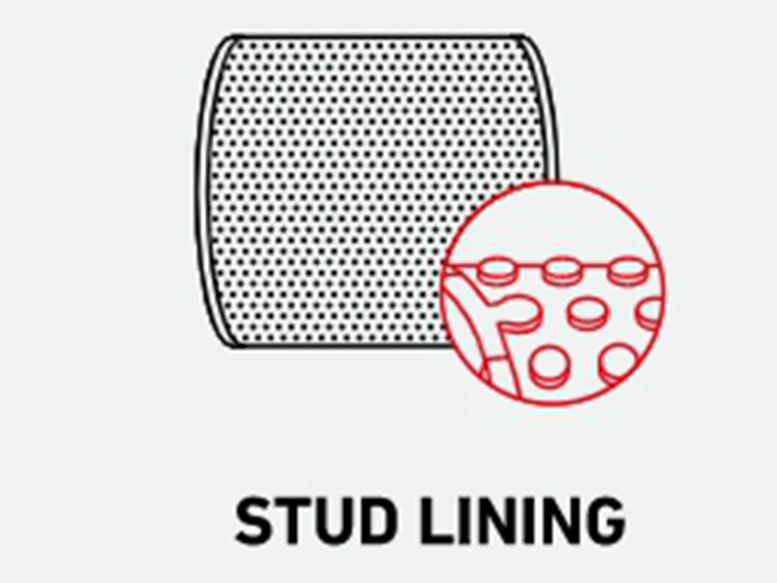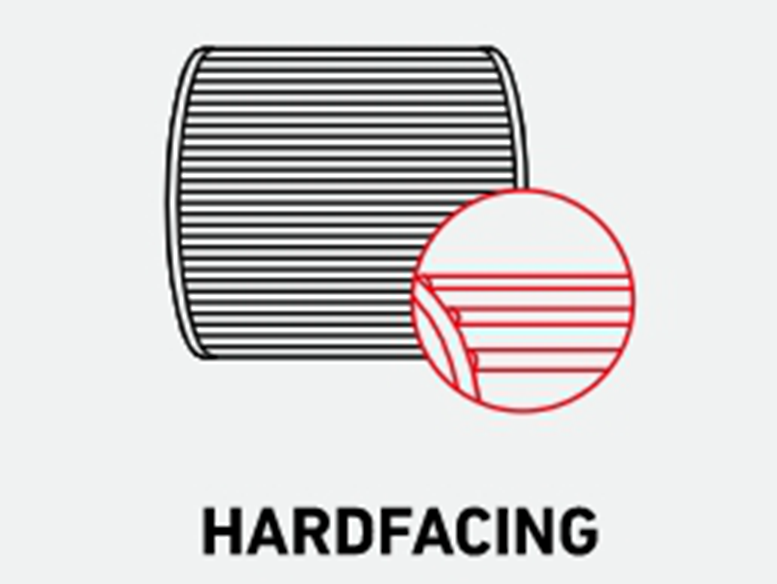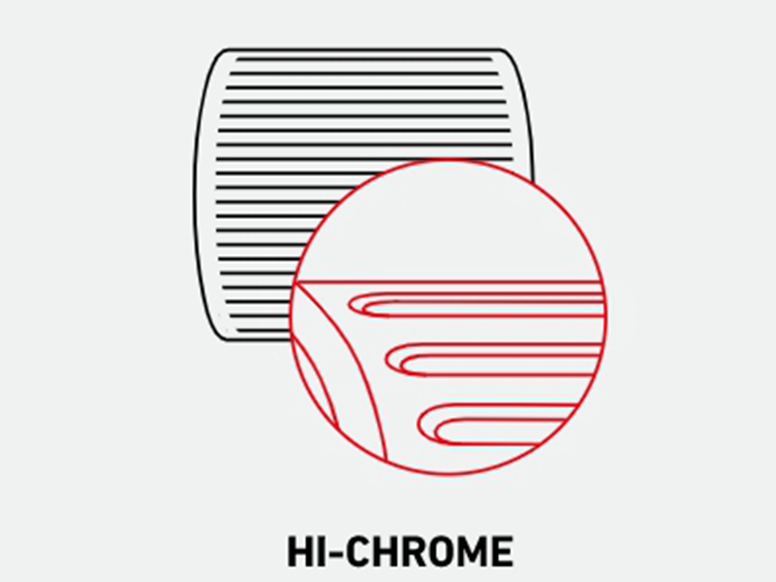
Privacy statement: Your privacy is very important to Us. Our company promises not to disclose your personal information to any external company with out your explicit permission.
High-pressure grinding rolls (HPGR) have become a widely used technology in the mining and cement industries due to their energy-efficient crushing capabilities. A key factor that influences the efficiency and longevity of HPGR is the quality of the roller surfaces(HPGR Wear Parts), also known as roller sleeves. Over time, wear and tear can significantly reduce the machine's effectiveness, making advanced surface processing techniques essential to extending the life of the rollers and improving performance.
In this article, we will explore the three main roller surface processing techniques used for HPGR rollers: studded surfaces, hard-surfaced materials, and welded surfaces. We will emphasize the cemented carbide studded surface technology, which has proven to offer superior wear resistance and longevity in challenging environments.
The roller surfaces in HPGR machines experience extreme pressure and abrasive forces during operation, especially when dealing with hard ores and materials. Over time, the surface of the roller sleeve can wear down, leading to decreased crushing efficiency, increased energy consumption, and more frequent downtime for maintenance and part replacement.
By applying advanced surface treatment techniques, the wear resistance of the roller sleeves can be significantly improved. This not only extends the service life of the rollers but also helps maintain consistent operational performance.

One of the most widely adopted techniques for HPGR roller surface enhancement is the cemented carbide studded surface. This technique involves embedding Carbide Button made of cemented carbide (also known as tungsten carbide) across the roller surface. The cemented carbide material is renowned for its extreme hardness, wear resistance, and ability to endure high-pressure environments, making it ideal for HPGR applications.
Advantages of Cemented Carbide Studded Roller Surfaces:
Theoretical Support:

Another commonly used technique for enhancing HPGR roller performance is hard surfacing, where a layer of hard materials such as chrome-molybdenum steel or other abrasion-resistant alloys is applied to the roller surface.
Advantages of Hard-Surfaced Roller Sleeves:
Limitations:

Welded roller surfaces involve applying layers of weld material to the roller, creating a protective barrier between the base material and the feed material. This technique typically uses a welding process such as plasma-transferred arc (PTA) welding to deposit wear-resistant alloys onto the roller surface.
Advantages of Welded Roller Surfaces:
Limitations:
Cemented carbide studs are composed of tungsten carbide, one of the hardest materials known. The studs' hardness typically ranges from 85 to 92 HRA (Rockwell A), making them incredibly resistant to wear from the high-pressure and abrasive forces in HPGR operations. In comparison, traditional steel or alloy surfaces cannot match this level of hardness, resulting in significantly shorter service life and more frequent maintenance intervals.
The studs on the roller surface increase friction between the rollers and the feed material, creating more points of contact and improving the crushing efficiency of the HPGR. This not only results in finer particle sizes but also allows for more efficient material breakage, which can reduce the energy required for the grinding process.
Thanks to the improved material breakage and enhanced roller lifespan, HPGRs with cemented carbide studded surfaces consume less energy and require fewer operational stoppages for maintenance. This translates into lower operating costs and higher throughput for operators, especially in mining operations where downtime can be incredibly costly.
As the demand for more energy-efficient and longer-lasting HPGR solutions grows, cemented carbide studded technology is expected to continue leading the industry. Innovations in material science and processing techniques, such as the development of nano-structured carbide materials, may further enhance the wear resistance and performance of studded roller surfaces. Additionally, improvements in manufacturing techniques could lower the cost of producing cemented carbide studs, making this technology more accessible across a wider range of industries.
When it comes to optimizing HPGR roller performance, cemented carbide studded surfaces offer a clear advantage over other processing techniques. Their superior hardness, durability, and efficiency make them the preferred choice for high-pressure grinding applications in industries such as mining, cement, and mineral processing.
While hard-surfaced and welded roller surfaces can provide acceptable performance in less demanding environments, cemented carbide studs consistently outperform in terms of wear resistance and operational longevity. By investing in high-quality studded roller surfaces, operators can extend equipment lifespan, reduce maintenance downtime, and achieve significant energy savings.
For those in industries that rely heavily on HPGR technology, adopting cemented carbide studded roller surfaces is a smart choice for both immediate and long-term gains.
New Quality and Empowerment to Create a New Era of Mining Industry Development China International Mining Expo (CIME) is an internationally renowned mining industry exhibition, based on the Northeast...
Talisman Mining has confirmed that it has made a greenfield base metal-precious metal discovery at the Durnings prospect of its Lachlan exploration project in central New South Wales. On the north...
Bolivia and China are actively expanding cooperation in the field of mining. Recently, Chinese Ambassador to Bolivia Wang Liang has called on the President of the National Lithium Company of Bolivia...
Argentina's Ministry of Mines expects the country's copper exports to increase to $5 billion by 2030, when seven projects will come on line, according to the BNAmericas website. The seven projects,...
Email to this supplier

Privacy statement: Your privacy is very important to Us. Our company promises not to disclose your personal information to any external company with out your explicit permission.

Fill in more information so that we can get in touch with you faster
Privacy statement: Your privacy is very important to Us. Our company promises not to disclose your personal information to any external company with out your explicit permission.